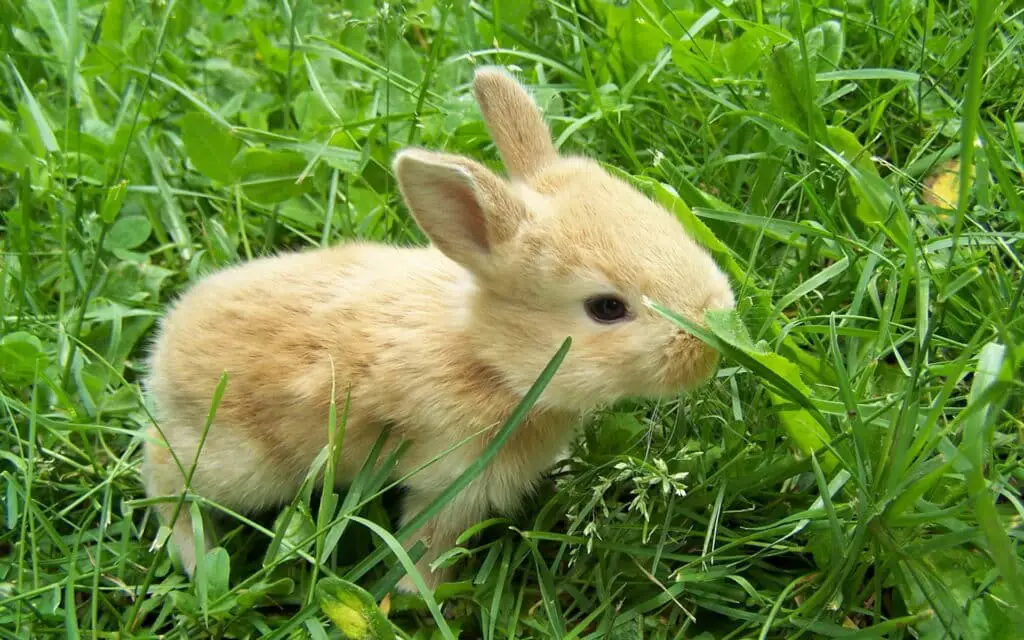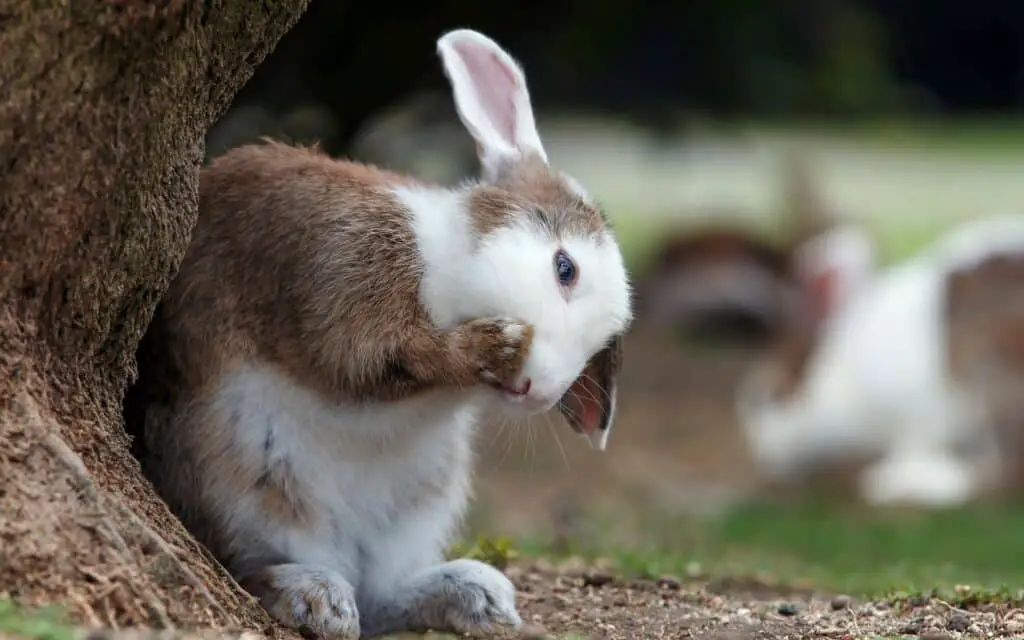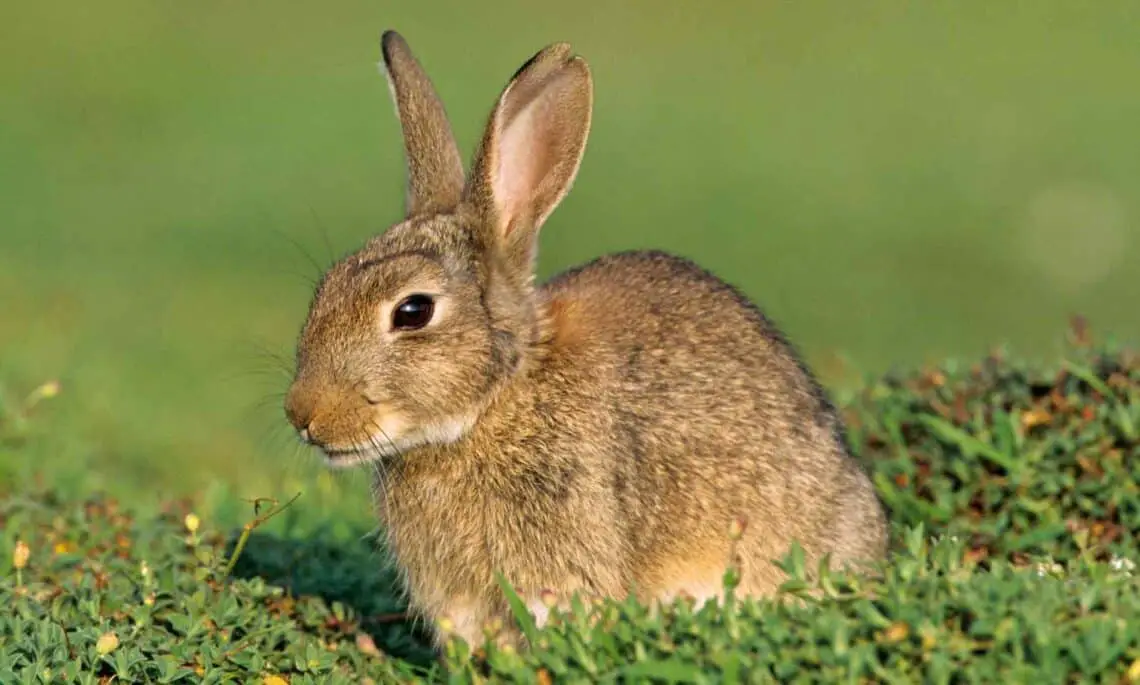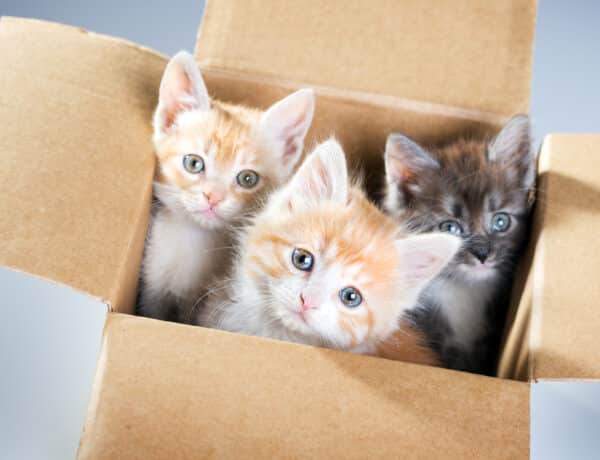Introduction
Can Rabbits Live Outside: As the gentle hop of a rabbit and its adorable twitching nose captivate the hearts of many, the question of whether these furry companions can thrive in the great outdoors becomes a topic of contemplation. Rabbits, known for their curious nature and penchant for exploration, have been favored as pets for generations. Yet, their natural instincts and behaviors hint at a life more attuned to the wild. This begs the question: Can rabbits live outside?
While traditional notions of pet rabbits shed often conjure images of cozy indoor cages and domestic comforts, the idea of allowing rabbits to embrace their innate wild tendencies by residing outdoors has gained attention. This intriguing concept prompts a deeper exploration into the factors that determine whether rabbits can indeed flourish in an outdoor environment. From climate considerations to shelter requirements, predator awareness to dietary adjustments, the decision to house rabbits outdoors involves a careful balancing act between their natural inclinations and the safety and well-being that responsible pet ownership demands.
In this comprehensive guide, we delve into the various facets of the debate surrounding outdoor rabbit living. By examining both the biological origins of rabbits and the practical considerations necessary for their survival in the wild or as outdoor pets, we aim to provide an informed perspective for rabbit enthusiasts and prospective pet owners alike. Whether you’re curious about fostering a deeper connection between your pet and its ancestral heritage or simply seeking the best way to ensure your rabbit’s health and happiness.

Is it OK to leave rabbits outside?
Rabbits need protection from predators at all times. When housed outside, they need a large hutch which is safe from predators (cats, dogs, foxes). This should be insect (mosquito) proof and protect rabbits from extreme weather. Position the hutch so it is also protected from weather (on a verandah or deck).
Rabbit Species and Breed
There are numerous rabbit breeds, each with its own characteristics and adaptability to outdoor living. Some breeds have thicker fur and better resistance to colder temperatures, while others have more delicate constitutions and are better suited for indoor living. It’s essential to research the specific breed you have to determine their ideal living conditions.
Climate and Weather Conditions
One of the most crucial factors to consider is the climate of your region. Rabbits are sensitive to extreme temperatures, both hot and cold. Harsh weather conditions can put them at risk of heatstroke, frostbite, or hypothermia. If you live in an area with extreme temperatures, it might be safer to keep your rabbits indoors or provide them with a well-insulated outdoor hutch.
Predator Protection
Rabbits are prey animals, and leaving them outside exposes them to various predators such as birds of prey, foxes, raccoons, and even domestic animals like dogs and cats. Ensuring adequate protection against these predators is essential if you intend to keep your rabbits outside. This might involve using secure hutches or enclosures made from predator-proof materials.
Housing and Enclosure
If you decide to house your rabbits outside, providing them with a suitable and spacious enclosure is crucial. The enclosure should be secure, well-ventilated, and offer protection from the elements. It should also include areas for shelter, exercise, and places to hide. Regular cleaning and maintenance of the enclosure are necessary to prevent health issues.
Social Interaction
Rabbits are social animals that thrive on companionship. If you’re considering leaving a single rabbit outside, you might want to reconsider, as they can become lonely and stressed. It’s recommended to keep rabbits in pairs or small groups to provide social interaction and mental stimulation.
Healthcare and Monitoring
Regardless of whether your rabbits are indoors or outdoors, regular healthcare and monitoring are vital. Outdoor rabbits may be exposed to parasites, diseases carried by wild animals, and environmental hazards. Regular veterinary check-ups, proper nutrition, and a clean living environment are essential for their well-being.
Are rabbits happier inside or outside?
More importantly, it’s easier to socialize a rabbit when they are kept indoors, which is better for their well-being in the long run. While there are always exceptions, for most people I recommend keeping an indoor rabbit because it will be a happier life for the rabbit.
Rabbit Behavior and Nature
Rabbits are social, curious, and active animals by nature. In the wild, they live in warrens and spend their time foraging, exploring, and interacting with other members of their group. In captivity, replicating these natural behaviors is essential for their well-being. Both indoor and outdoor environments can offer opportunities for rabbits to engage in these activities.
Indoor Living
Keeping rabbits indoors has its benefits. Indoor environments are more controlled, protecting rabbits from harsh weather, predators, and extreme temperatures. They’re also less prone to parasites and diseases carried by outdoor pests. Rabbits kept indoors are usually more protected and can form closer bonds with their human caregivers due to increased interaction. However, to ensure their happiness, indoor rabbits need ample space for exercise, appropriate mental stimulation, and social interaction with humans and fellow rabbits.
Outdoor Living
Outdoor living can mimic a more natural habitat for rabbits. They can graze on fresh grass, dig, and bask in the sunlight. However, outdoor rabbits are exposed to various risks, including predators, extreme weather conditions, and health hazards. To keep outdoor rabbits happy, their enclosure must be secure, spacious, and well-equipped with shelter, hiding spots, and clean water. Social interaction and mental stimulation remain essential, even for outdoor rabbits.
Consideration of Individual Needs
Like humans, rabbits have individual preferences and personalities. Some rabbits may thrive outdoors, relishing the freedom and natural experiences, while others might be more comfortable and content within the controlled environment of an indoor space. Observing your rabbit’s behavior and monitoring their well-being is key to determining their happiness in a particular setting.
Combining the Best of Both
Striking a balance between indoor and outdoor experiences can offer the best of both worlds. Many rabbit owners opt for supervised outdoor playtime in secure enclosures, giving rabbits a chance to enjoy fresh air, natural behaviors, and sunlight while minimizing the associated risks. This approach combines the safety and interaction of indoor living with the enrichment of outdoor exploration.
How long can bunnies stay outside?
Rabbits can be kept outdoors all year round without any problems. Rabbits can be kept outdoors all year round. However, you need to make a few provisions to protect them from the heat, frost, wind and rain. This article will explain everything you need to know when keeping rabbits outdoors.
Climate and Weather Conditions
One of the most critical considerations when determining how long bunnies can stay outside is the climate of your area. Rabbits are sensitive to both extreme heat and cold. In hot weather, they are susceptible to heatstroke, dehydration, and stress. In cold weather, they can experience frostbite and hypothermia. It’s crucial to be aware of the temperature and weather conditions, and to take appropriate measures to protect your bunnies from harsh elements.
Breed and Adaptability
Different rabbit breeds have varying levels of adaptability to outdoor conditions. Some breeds, such as the Netherland Dwarf or Mini Rex, have shorter fur and are more susceptible to temperature fluctuations. Other breeds, like the Angora or Himalayan, might be more resilient to colder temperatures. Consider the breed of your bunnies when deciding how long they can safely stay outside.
Quality of Shelter and Enclosure
If you plan to keep your bunnies outside, their shelter and enclosure play a crucial role in their well-being. The enclosure should be secure, well-ventilated, and insulated to protect them from predators, extreme temperatures, and other potential hazards. Provide a sheltered area within the enclosure where they can retreat in case of inclement weather. Regularly inspect and maintain the enclosure to ensure it remains safe and comfortable for your bunnies.
Supervision and Interaction
Regardless of how long your bunnies spend outdoors, it’s important to provide them with regular supervision and interaction. Spending time with them not only helps monitor their health and behavior but also provides them with mental stimulation and social interaction, which are essential for their well-being.
Balancing Indoor and Outdoor Time
A prudent approach is to balance the time your bunnies spend indoors and outdoors. This allows them to benefit from the fresh air, natural behaviors, and sunlight of the outdoors while minimizing the risks associated with prolonged exposure. You can create a secure outdoor enclosure where they can play and explore under supervision and then bring them indoors during extreme weather conditions.
Health and Well-being
Above all, the health and well-being of your bunnies should guide your decisions. Regular veterinary check-ups, proper nutrition, and a clean living environment are fundamental to their happiness and longevity. If you notice any signs of discomfort, stress, or health issues, it’s essential to take appropriate action.
How do rabbits survive outside?
Outdoor bunnies regulate their body heat by growing a thick coat for the winter and moulting in preparation for the hot months of summer. A pet rabbit that’s spent its life indoors will not have done that because indoor temperature is pretty constant.
Camouflage and Hiding
In the wild, rabbits rely on their natural camouflage to blend into their surroundings and avoid detection by predators. Their fur coloration and patterns help them stay hidden in grassy or bushy areas. Additionally, rabbits are skilled diggers and create intricate burrows, or warrens, where they can seek shelter from predators and harsh weather.
Speed and Agility
Rabbits are known for their incredible speed and agility. When they sense danger, they can sprint quickly to escape predators. Their powerful hind legs are designed for rapid acceleration and evasive maneuvers, while their keen senses of hearing and smell help them detect threats from a distance.
Social Structures
Many wild rabbit species live in social groups, known as colonies. These groups provide safety in numbers and increase their chances of spotting predators. Rabbits within colonies communicate with each other through body language and vocalizations to alert the group about potential dangers.
Nocturnal Behavior
To avoid predators and extreme daytime temperatures, many wild rabbits are crepuscular or nocturnal, meaning they are most active during the twilight hours or at night. This behavior reduces their exposure to daytime threats and allows them to forage for food under the cover of darkness.
Adaptive Diets
Wild rabbits have a highly adaptive diet that includes a wide range of plant materials. They consume grasses, leaves, stems, and even bark from various plants. Their ability to process fibrous vegetation through a specialized digestive system helps them extract nutrients from their plant-based diet.
Reproductive Strategies
Rabbits are known for their rapid reproductive rates. They have short gestation periods and can produce multiple litters of offspring each year. This strategy helps compensate for their vulnerability to predation by ensuring that their population numbers remain relatively stable.
Vigilance and Alertness
Rabbits are naturally vigilant creatures, constantly scanning their surroundings for signs of danger. Their large eyes positioned on the sides of their heads provide a wide field of vision, allowing them to detect potential predators from various angles.
How old can rabbits live outside?
Although outdoor and wild pet rabbits have a low life span because they encounter harmful conditions, a pet rabbit raised at home can live up to 10 years or even 12 years in some cases. Rabbits that are raised outdoors are usually expected to live between 2 and 3 years.
Wild Rabbits
In the wild, the lifespan of rabbits can be relatively short due to various challenges. Predators, disease, competition for resources, and harsh weather conditions all contribute to a relatively high mortality rate. On average, wild rabbits might live around 1 to 2 years, with some species living slightly longer.
Average Lifespan
In ideal conditions, domesticated outdoor rabbits can live around 5 to 10 years or even longer, depending on the factors mentioned above. With attentive care, a suitable environment, and preventive measures, some rabbits have been known to live beyond a decade.
Balancing Safety and Quality of Life
When deciding to keep rabbits outdoors, it’s crucial to strike a balance between their safety and quality of life. Taking measures to protect them from predators, extreme weather, and health risks while ensuring they have proper nutrition, social interaction, and mental stimulation can contribute to a longer and happier life for outdoor rabbits.
Is it OK to leave rabbits outside?
Rabbits need protection from predators at all times. When housed outside, they need a large hutch which is safe from predators (cats, dogs, foxes). This should be insect (mosquito) proof and protect rabbits from extreme weather. Position the hutch so it is also protected from weather (on a verandah or deck).
Rabbit Breeds and Adaptability
Different rabbit breeds exhibit varying degrees of adaptability to outdoor living. Some breeds possess thicker fur and a higher tolerance for colder temperatures, while others have more delicate physical constitutions and may be better suited to indoor living. It’s vital to research and understand the specific breed’s needs before making a decision.
Climate and Weather Conditions
One of the paramount considerations is the climate of the region. Rabbits are vulnerable to extreme temperatures, both hot and cold. Exposure to harsh weather conditions can lead to heatstroke, frostbite, or hypothermia. It’s crucial to evaluate the local climate and whether the outdoor environment can be adequately modified to protect the rabbits from the elements.
Predator Protection
Rabbits are prey animals, which makes them susceptible to a variety of predators, including birds of prey, foxes, raccoons, and even domesticated pets like dogs and cats. Ensuring proper protection against these predators is paramount. A secure hutch or enclosure made from predator-resistant materials can mitigate this risk.
Housing and Enclosure
If the decision is made to house rabbits outside, providing a suitable and spacious enclosure is non-negotiable. The enclosure should be well-ventilated, secure, and offer protection from weather extremes. It should also have spaces for shelter, exercise, and hiding. Regular maintenance and cleaning of the enclosure are essential to prevent health issues.
Social Interaction and Companionship
Rabbits are social animals that thrive on companionship. If you plan to leave a single rabbit outside, you may need to reconsider, as they can become lonely and stressed. It’s recommended to keep rabbits in pairs or small groups to provide social interaction and mental stimulation.
Healthcare and Monitoring
Regardless of whether rabbits are kept indoors or outdoors, regular healthcare and monitoring are critical. Outdoor rabbits might be exposed to diseases carried by wild animals or parasites. Regular veterinary visits, proper nutrition, and a clean living environment are crucial for their health and longevity.
Alternative Options
If concerns about the risks of keeping rabbits outside are present, creating a safe and enriching indoor space may be a more viable choice. Indoor rabbits can still enjoy supervised outdoor playtime in secure and enclosed spaces.
When can I put my indoor rabbit outside?
During the winter do not bring your rabbit inside at all – the sudden temperature change when you put it back outside can be fatal to your rabbit. If you have an indoors rabbit and want to move it outdoors permanently, you can do this anytime after early spring when the frosts are over.
Weather Conditions
The most crucial factor to consider is the weather. Rabbits are sensitive to temperature extremes, both hot and cold. It’s essential to choose a time when the weather is mild and conducive to their well-being. Spring and early fall, when temperatures are moderate and stable, are generally better times for the transition.
Gradual Transition
Abruptly moving your indoor rabbit outside can be stressful and overwhelming. To ease the transition, consider starting with short supervised outings in a secure and enclosed area. Gradually increase the duration of outdoor time while monitoring your rabbit’s comfort level and behavior.
Rabbit’s Health and Readiness
Ensure that your rabbit is in good health before introducing them to the outdoor environment. A visit to the veterinarian can help determine if your rabbit is ready for the transition. Factors such as age, existing health conditions, and vaccination status should be taken into account.
Predators and Safety
Safety is paramount when moving your rabbit outside. Make sure the outdoor area is predator-proof and escape-proof. This includes using sturdy enclosures, fencing, and secure hutches to protect your rabbit from potential dangers.
Acclimation and Supervision
Rabbits need time to acclimate to the new sights, sounds, and smells of the outdoor environment. During the initial outings, closely supervise your rabbit’s behavior and reactions. Be prepared to intervene if your rabbit becomes stressed or anxious.
Enrichment and Stimulation
Provide plenty of mental and physical stimulation in the outdoor area. This includes hiding spots, tunnels, toys, and areas to explore. Mimic natural behaviors like digging, grazing, and hopping to create a stimulating and enjoyable experience.
Do rabbits prefer inside or outside?
Rabbits can live quite happily indoors and they should be provided with secure accommodation where they can feel safe, sleep, use a particular area as a toilet, and be confined to when unsupervised.
Natural Behaviors
Rabbits are naturally adapted to outdoor environments in the wild. They are agile and fast runners, equipped with strong legs that allow them to explore wide areas for food and escape predators. Their instinctual behaviors, such as digging, hopping, and grazing, are better suited to outdoor spaces where they can engage in these activities freely.
Indoor Preferences
However, domesticated rabbits may exhibit preferences for indoor living due to the protection, comfort, and companionship they find in controlled indoor environments. Indoor rabbits are shielded from predators, extreme weather conditions, and potential diseases. They also benefit from regular interaction with their human caregivers, which contributes to their social and mental well-being.
Social Interaction
Rabbits are social animals that thrive on companionship. Indoor rabbits often have more opportunities to interact with their human caregivers and, if kept in pairs or groups, with other rabbits. The companionship and mental stimulation provided indoors can positively impact their emotional health and happiness.
Safety and Security
Indoor environments provide rabbits with a sense of safety and security. They can retreat to their own spaces, hide when they feel threatened, and explore without the risk of predators. This controlled environment is especially beneficial for rabbits that are more sensitive or prone to stress.
Balancing Both Worlds
While domesticated rabbits have adapted to indoor living, that doesn’t mean they can’t enjoy the outdoors. Many rabbit owners strike a balance between the two by providing supervised outdoor playtime in secure enclosures. This allows rabbits to experience the sensory stimulation of the outdoors while maintaining their safety.
Personal Preferences
Just like humans, rabbits have individual preferences. Some rabbits might thoroughly enjoy exploring the outdoors, while others might prefer the comforts of an indoor environment. Observing your rabbit’s behavior can help you understand their preferences and provide an environment that suits them best.

Conclusion
In the complex world of rabbit care, the question of whether these furry companions can thrive outside finds its answer within a delicate balance of instinct, environment, and human responsibility. While rabbits possess a strong connection to their wild roots, their domestication over centuries has brought about changes in their adaptability to various living conditions.
It’s clear that rabbits can indeed live outside, but the decision to house them outdoors requires careful consideration. Factors such as climate, shelter, predator protection, and dietary needs play pivotal roles in determining the success of outdoor rabbit living. Providing a safe, secure, and enriching environment is paramount to ensure their well-being and happiness.
For those who opt to embrace the challenge of outdoor rabbit keeping, a deep understanding of these animals’ natural behaviors, coupled with a commitment to providing adequate care, is essential. In contrast, some rabbit owners might find that an indoor setting better suits the needs of their furry companions, enabling a closer bond and easier management of variables that could impact the rabbit’s health.
Ultimately, the decision hinges on the individual rabbit’s temperament, the owner’s ability to meet its needs, and the environment in which they reside. By thoughtfully weighing the pros and cons, and tailoring the living situation to the rabbit’s specific requirements, one can create a harmonious existence that benefits both the rabbit and its human companions.
In this exploration of whether rabbits can live outside, we’ve uncovered the nuanced interplay between a creature’s inherent instincts and its adapted relationship with humans. Whether thriving in a carefully curated outdoor environment or enjoying the coziness of an indoor habitat, rabbits continue to captivate our hearts and intrigue our minds as we seek to provide them with the best possible life.



No Comments